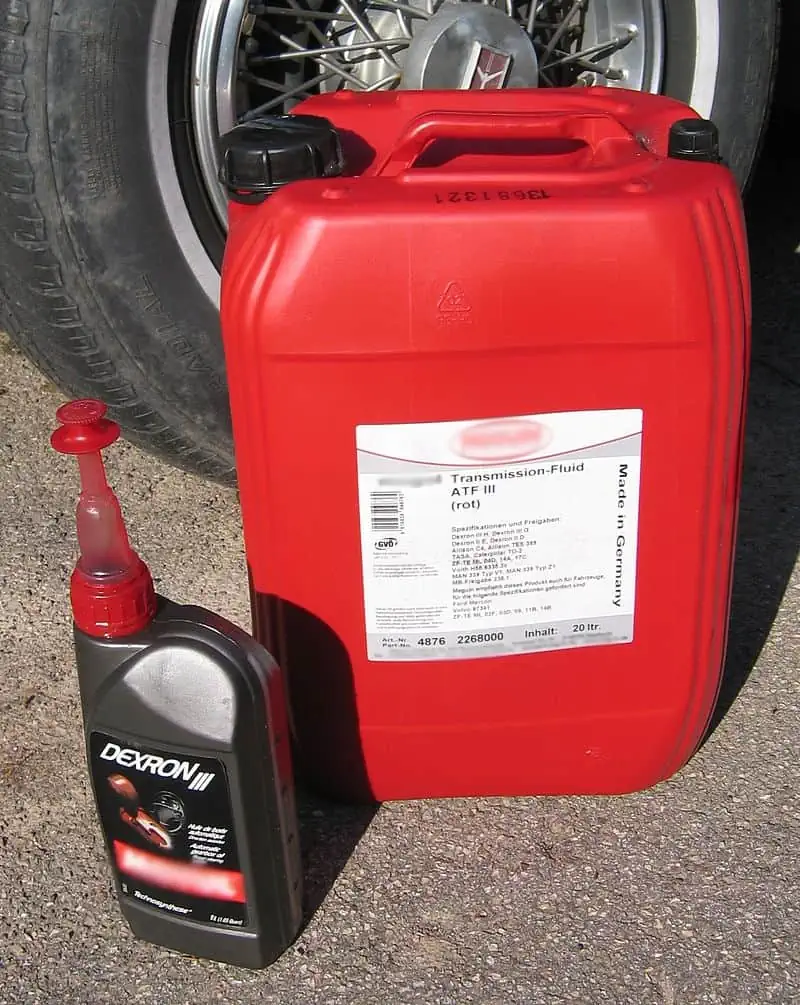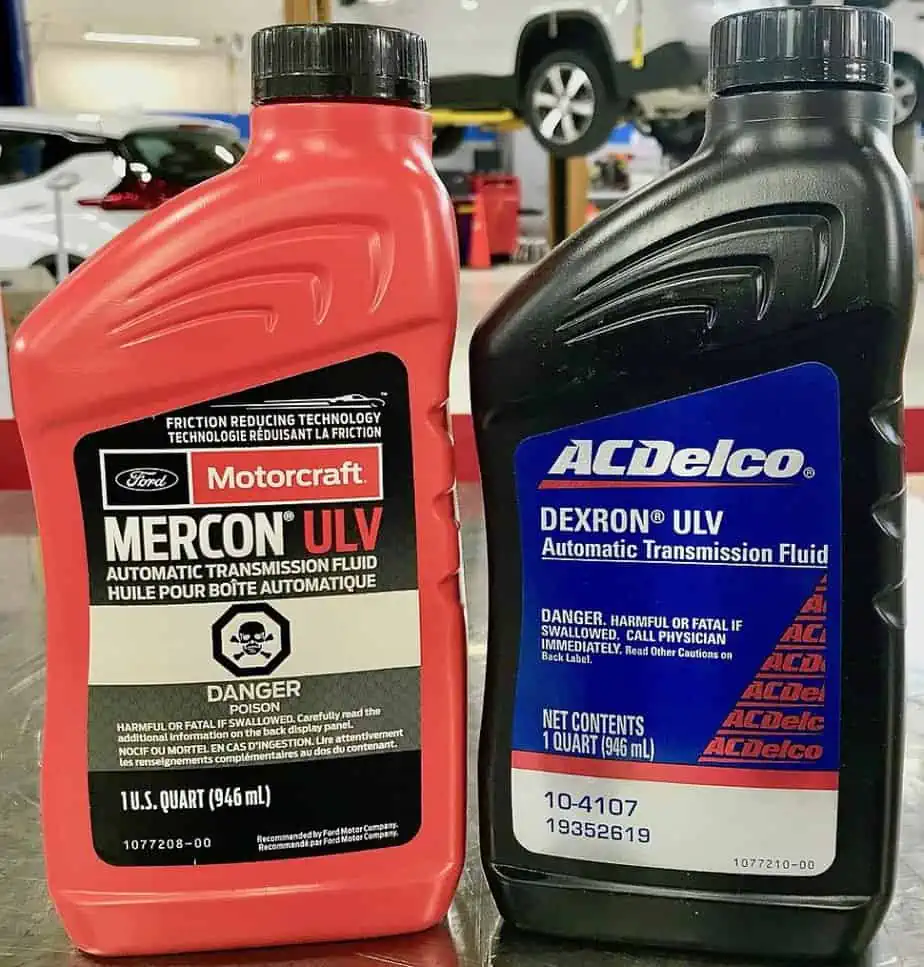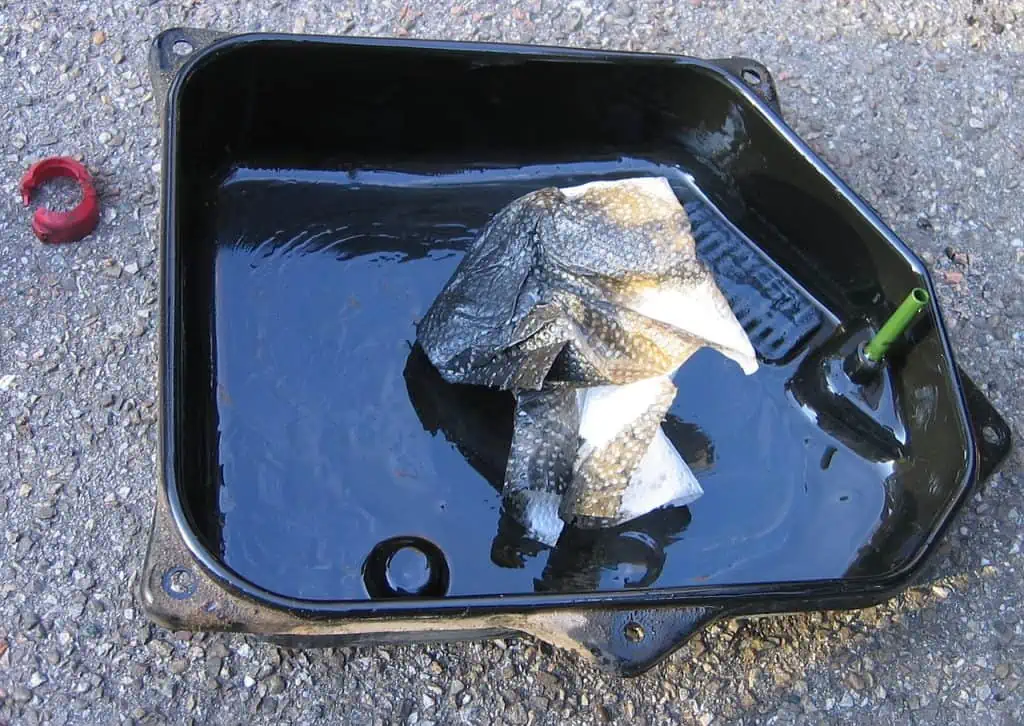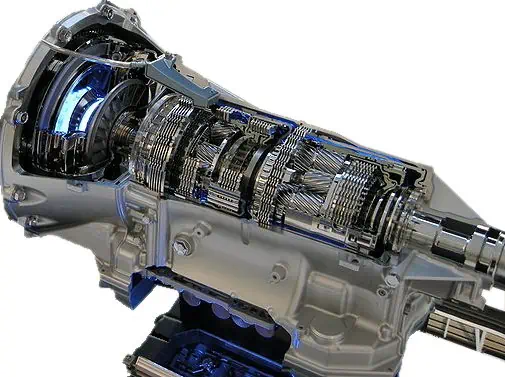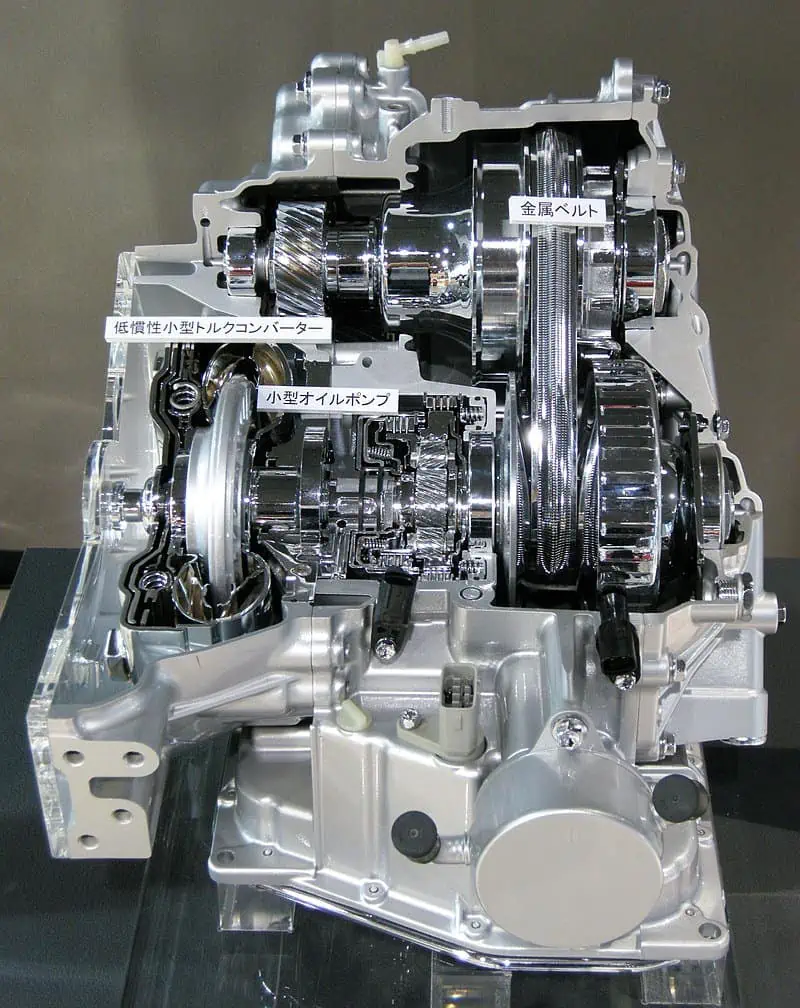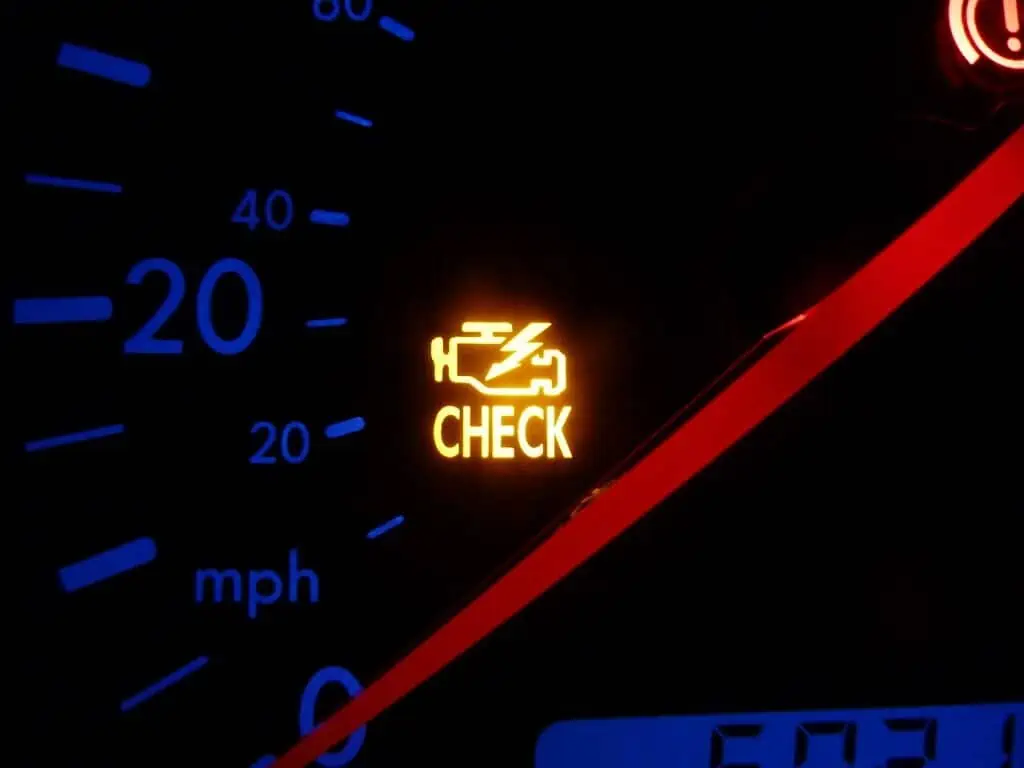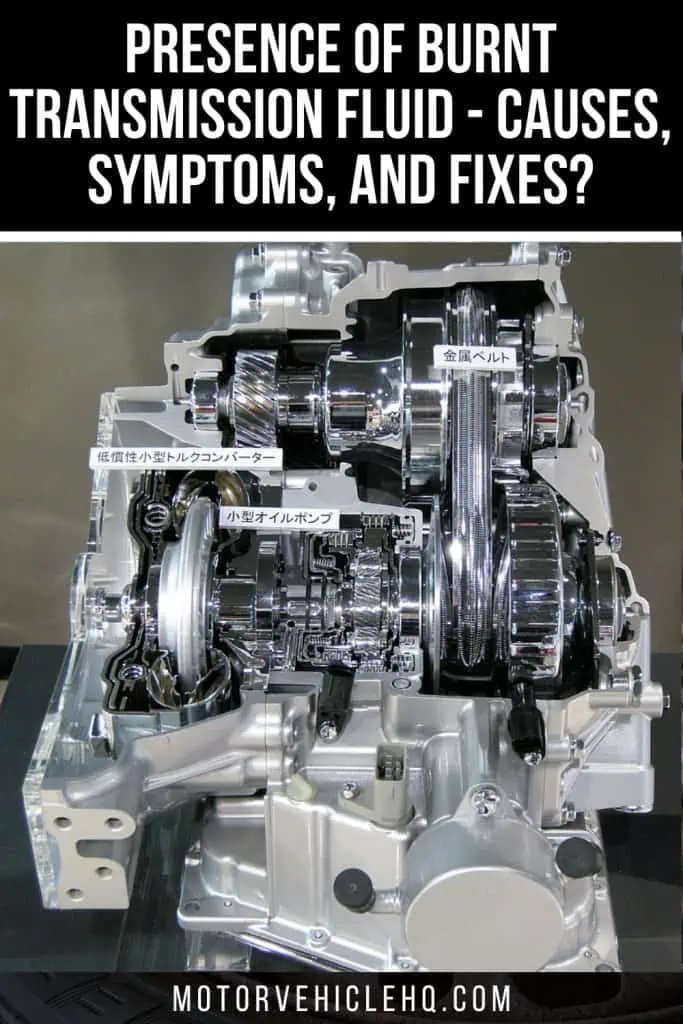It’s interesting that I still think transmissions are more complex than engines. Yes, they both contain a wide variety of pieces and moving sections that must all operate together harmoniously.
However, although accessing and working on engines is often simple, fixing a transmission can be extremely difficult. Consider the phrase burnt transmission fluid.
As we are all aware, the gearboxes in automobiles contain a variety of gears, clutches, bands, solenoids, pumps, sensors, and other components. Without any sort of lubrication in between the majority of these mechanical components, the transmission as a whole would quickly fall apart.
As a result, all gearboxes include transmission fluid, sometimes known as “gearbox oil,” to lubricate their internal components.
Transmission fluid is crucial to a gearbox’s operation in addition to leaving behind a thin, slick, greasy layer of lubrication. Transmission fluid guarantees that specific gearbox components can be moved by providing hydraulic pressure.
For instance, changing gears when under pressure. But how well would this all hold up if your car’s gearbox was being lubricated with burnt transmission fluid?
Transmission Fluid: What Is It?
Let’s take a deeper look at what transmission fluid generally does to your gearbox before discussing burnt transmission fluid. What exactly does transmission fluid do, then?
In simple terms, it functions similarly to motor oil for your transmission. It’s a greasy solution or lubricating oil. Transmission fluid acts as a lubricant when it is allowed to freely circulate inside a closed transmission case.
A thin layer of oil adheres to the transmission’s numerous moving elements as it circulates them. It might permit the gearbox’s parts that must physically come into touch to turn, grind, twist, and so on without wearing them out.
Automatic transmission fluid (ATF) in different cans 1l + 20l by Hans Haase / CC BY-SA 4.0. In addition to leaving a thin, slick, greasy layer of lubrication behind, transmission fluid is essential to a gearbox’s operation. By supplying hydraulic pressure, transmission fluid ensures that certain gearbox components can be moved.
As a result, the lifespan of these components is extended, and their performance, dependability, and efficiency are kept at their highest levels.
Otherwise, the interior exposed metal elements of your gearbox could easily grind against one another. On the other hand, transmission fluid also serves as a cooling agent for these components.
Gearbox oil moves through the transmission, absorbing heat wherever it goes. Finally, circulate the hot gearbox fluid into an oil cooler or the transmission fluid pan-slash reservoir to cool it.
Additionally, transmission fluid is the only source of hydraulic pressure, and this mostly pertains to automatic gearboxes. It is simple to pressurize gearbox oil before applying that pressure to activate or engage certain (automatic transmission) components.
Using that increased pressure, for instance, can force the torque converter to shift and change gears. For gearboxes that are operated manually, this is not required.
Which are the Different Categories of Transmission Fluids?
Its functions aren’t all the same, despite how straightforward they seem. As we work to understand more about burnt transmission fluid, it will be essential to comprehend this.
There are many different transmission fluids available with different mixtures and compositions. You can’t just choose a bottle of transmission fluid and expect it to work with your automobile straight immediately, just like engine oil:
1. The Automatic Transmission Fluid
These are also referred to as “ATF” and are created, as their name suggests, for auto gearboxes. Modern and more contemporary manual transmissions, however, can also use ATF. They help with hydraulic pressure, cooling, and lubrication. The torque converter, valve body, and clutch friction plate on the latter all depend on it to function properly.
2. The Manual Transmission Fluid
Only older vehicles require dedicated and specialist manual transmission fluid (with manual gearboxes). In contemporary manual autos, for instance, fairly heavy and viscous 75W to 140W (W is for “weight” when it reaches temperature) is rarely utilized. Nowadays, if you have a (new) manual car, you might easily switch it out for an ATF-based automatic.
3. The ATF+, Mercon, and Dexron
They are now the most widely utilized and well-liked ATF batch. Most vehicles built by GM, Ford, Chrysler, Honda (and Acura), Jeep, Hyundai, Toyota (and Lexus), and other manufacturers have it.
4. The HFM
It stands for “high friction modified,” a compound that incorporates a lot of additives to increase friction (more on that later).
5. The Type-F
If you don’t own a classic car, you won’t be using this, as it was last utilized in the 1970s (with a bronze clutch plate).
6. The CVT Fluid
Made especially for “continuously variable transmission,” which substitutes pulleys and chains for gears.
Mercon ULV and Dexron-ULV (Ultra-Low Viscosity) ATF by Hymn62 / CC BY-SA 4.0. The sole source of hydraulic pressure, which mostly applies to automatic gearboxes, is transmission fluid. Before applying that pressure to activate or engage specific (automatic transmission) components, gearbox oil can easily be pressurized.
7. The Hypoid Gear Oil
They typically reside in the back axle of large trucks since they are incredibly resistant to extreme temperatures and pressure.
Synthetic Transmission Fluid: What Is It?
Traditionally, crude oil is refined to make traditional transmission fluid. They have drawbacks, such as carrying contaminants from crude and having restrictions on their chemical composition, despite being simpler and less expensive.
Synthetic transmission fluids, on the other hand, are created and combined specifically in labs through meticulous chemical synthesis. Usually, the latter form is more expensive.
But aside from that, synthetic fluids have numerous other advantages. For instance, as we alluded to before, additives might be used to create synthetic fluids.
These additives might give transmission fluids extra qualities like increased heat and pressure resistance. Alternately, you may make them more resistant to deterioration over time, enhance their lubrication, or even add rust protection.
Be aware that not all transmissions can use synthetic-type fluids. But if they are, some benefits of selecting synthetic transmission fluid over conventional ones are as follows:
- It is designed to more precisely match viscosity levels, which might enhance lubrication. Additionally, by maximizing the performance and efficiency of the gearbox, it can even improve fuel economy.
- You could anticipate it to shift more smoothly given that it can maintain viscosity, lubrication, hydraulic pressure, and cooling qualities even at higher temperatures and loads for extended periods.
- They don’t need to be changed as frequently as regular fluids. Greater convenience and lower servicing expenses accompany lower maintenance.
- It is three times more resistant to oxidation and heat damage than standard fluids. As a result, sludge, carbon deposits, and other pollutants won’t accumulate.
- Your transmission’s lifespan could be increased since it can operate cleaner, smoother, and cooler.
- Rust formation inside the transmission can be considerably decreased with the use of specific additives designed to fight corrosion.
Transmission Fluid: What Color Should It Be?
Transmission fluid should have a bright red color when it is fresh and poured directly from a new bottle, with a syrupy appearance. Furthermore, it keeps a transparent uniformity. But eventually, the color and opaqueness will start to shift.
The color of the transmission fluid can be used as a gauge to determine how effectively the transmission is functioning. Alternatively, if the gearbox oil needs to be changed:
1. Semi-Transparent, Reddish-Brown
Even though it is slightly more worn in than a new batch, it is still in good condition.
Oil pan of an automatic transmission with sedimented wear by Hans Haase / CC BY-SA 4.0. When fresh and poured directly from a new bottle, transmission fluid should be a bright red color with a viscous consistency. Additionally, it maintains a transparent uniformity. However, the hue and opaqueness will start to change with time.
2. Brown and Slightly Opaque
It’s starting to look a little shabby, worn out, and unclean now. At this stage, having the fluid changed and the transmission fluid filter changed is advised.
3. Very Opaque, Blackish-Brown Color
In addition to being outdated and filthy, the fluid could also contain substantial levels of pollutants and oxidation traces. This transmission fluid is extremely “burnt,” and thus it needs to be changed right away.
4. Milky, Light Pink
It is a really bad omen if it resembles a strawberry milkshake. It means that the transmission fluid has somehow become contaminated with water or coolant and is currently circulating throughout the gearbox. You also need to change this contaminated fluid. The transmission may need to be rebuilt, restored, or perhaps completely replaced, depending on how severe the damage is.
Why Does Burnt Transmission Fluid Occur?
However excellent your gearbox oil is, burnt transmission fluid is unavoidable. Every transmission fluid eventually experiences chemical breakdown due to heat, wear, and time.
This is the root of the term burnt transmission fluid. Here are some of the most frequent reasons why your gearbox oil is burning or is smoking noticeably:
1. A Low Level of Car Transmission Fluid
Low fluid levels are one of the most frequent causes of burnt transmission fluid, which can indicate that there is a problem with your transmission. If the fluid level falls too low, the interior parts of your transmission are exposed to air, which causes overheating and eventually burns the fluid.
This is a signal that your car needs to be inspected by a qualified technician or transmission specialist right away. It’s crucial to fill the transmission with enough fluid to adequately lubricate all of its internal parts.
2. Low Fluid Level Sustained Over Time
Neglecting your transmission’s requirements or simply not having the time to do routine auto maintenance could be another factor.
Long-term low fluid levels can seriously harm the transmission and perhaps cause it to fail. Watch out for warning indications of burnt transmissions because this may necessitate a complete transmission replacement.
3. Defective Transfer Case
Burned fluid can also result from a transfer case issue, which prevents the transmission system’s components from receiving the necessary amounts of oil.
If your car skips or hesitates while navigating slopes, especially at speeds exceeding five mph, you may have this issue. To prevent any harm to other components of your transmission system, it’s crucial to have any such issues looked at as soon as possible.
4. Mechanical Sensor Failure
If you find that your automobile hesitates when shifting gears or slips gears after climbing a hill, it’s likely that your transmission sensors are malfunctioning and causing the fluid to burn.
An open view of an automatic transmission by Silverxxx / CC BY-SA 3.0. Transmission fluid is the sole thing keeping your gearbox from destroying itself. If the gearbox oil is burned or worn out, it won’t be able to give automatic transmissions the essential lubrication, cooling, and hydraulic pressure.
Your car’s sensors measure the torque produced in each gear and communicate this information to your automatic gearbox so that it can change gears appropriately.
If there is a problem with one of these two sensors, it will affect how the vehicle shifts between gears. If the problem is severe enough, you may need to drive carefully or even avoid certain types of terrain.
This is extremely risky since it might result in accidents while driving on congested highways where you occasionally have no choice but to go uphill.
5. Clogged Oil Filter
When your oil filter becomes clogged and doesn’t enable the right amount of new, clean oil to get through, this is one of the most frequent causes of burnt transmission fluid.
Long-term total clogging of your oil filter may cause overheating, which will result in the burning of the fluid.
This is a serious issue with your transmission system that also affects other components. The various parts of the car are not lubricated when there is not enough new oil flowing through.
This implies that if your transmission sustains enough damage from being exposed to air for an extended period without receiving sufficient lubrication, you may need to have the entire unit replaced.
What Symptoms Represent Burnt Transmission Fluid?
You should respond quickly the moment you even momentarily see burnt transmission fluid. Burnt transmission fluid can have a significant negative effect on a gearbox’s driveability and performance if left unattended.
Not to mention, doing so would put the transmission under significantly more stress and accelerate its wear to the point where future gearbox repairs would be expensive. Therefore, watch out for signs like:
- Strong or not, the interior smells like it’s burning. specifically, the passageway to the engine that is at the center console. The majority of transmissions are located there. Your transmission may have overheated if it smells burnt; this could be due to old and worn fluids.
- You might discover a leak in the transmission fluid or a low fluid level in the reservoir. Fluids shouldn’t leak or burn out naturally because a gearbox is an entirely contained system. Check to check if the gearbox oil is bright red and fragrant to determine whether it is leaking. It is burnt if it is black or dark brown and smells smokey.
- Having trouble changing gears or having a hard shift. Have you noticed any hesitation or plain resistance from the gearbox when shifting between gears? Other signs include the transmission slipping between ratios or trembling continuously while you’re driving.
- In the worst-case scenario, if you let your transmission become uncomfortable and hot, it could begin to smoke. Your transmission fluids can no longer cool down at this stage. If what you’re seeing is smoke, you shouldn’t be operating a vehicle.
- Most modern cars have warning lights that can let you know when the transmission fluid is low or damaged. All you have to do is watch for it on the dashboard. Otherwise, transmission-related problems in some cars might turn on the check engine light.
Is Burnt Transmission Fluid a Big Car Problem?
Simply said. The only thing preventing your gearbox from destroying itself is transmission fluid. If the gearbox oil is burned or worn out, it will not be able to provide the necessary lubrication, cooling, and hydraulic pressure for automatic transmissions.
A manual transmission for a four-wheel-drive vehicle by Typhoon / CC BY-SA 3.0. However, more recent and modern manual transmissions can also employ ATF. They support lubrication, cooling, and hydraulic pressure. On the latter, its proper operation is dependent upon the torque converter, valve body, and clutch friction plate.
In other words, your gearbox will operate more poorly, generate more heat, perform worse, have worse driveability, and eventually wear out. Burnt transmission fluid will eventually start to cause serious problems with your transmission.
The greatest thing you can do if you notice the early signs of burnt transmission fluid is to get it changed as soon as possible. If you wait any longer and the gearbox is exposed to the circulating burning oils, the gearbox will completely fail. Consequently, it needs to be extensively rebuilt or replaced.
At that time, the transmission needs to be completely rebuilt. The rest of the gearbox will be machined and reconditioned, and important components will be replaced. Invoices ranging from $1,000 to $4,000 or more are now expected, as opposed to a $100 or so gearbox fluid change.
What Steps Should I Take If I Have Burnt Transmission Fluid In My Car?
Do you think your car may now contain burnt transmission fluid? The last thing you’ll want to do is keep driving your automobile around at that point.
If you have burnt transmission fluid and don’t do anything about it, you could endanger the transmission and your entire car. If you want to have a transmission fluid flush done, get in touch with a local auto repair company straight away.
All of the burnt transmission fluid will be removed from your automobile and properly disposed of when you have the transmission fluid in it cleaned. To get your automobile back on the road, the mechanic will then fill it with new transmission fluid.
While doing this, they’ll check your transmission to see if they can find any indications of trouble. Additionally, they’ll inform you if your car may be leaking transmission fluid.
The good news is that you shouldn’t have to worry about burnt transmission fluid recurring anytime soon after having your transmission fluid cleansed and refilled. For the foreseeable future, transmission fluid shouldn’t be an issue for you.
If you do have an undiagnosed transmission fluid leak, that’s the only time it might become a problem. But aside from that, you won’t need to worry anymore about burnt transmission fluid.
What Is the Solution to Burnt Transmission Fluid?
The only solution if your car has a problem with burnt transmission fluid and has that smokey smell to it is to replace it. Transmission fluids are engineered to last for quite a wide range of times.
Once every 30,000 miles would be at the low end of the range. This is exceptionally low, though, and is typically the result of using inexpensive transmission oil or frequently overworking and heating the gearbox.
The typical vehicle’s transmission fluid should last between 60,000 and 100,000 miles before needing to be changed. Specialty synthetic gearbox oils, for example, have a rated lifespan of up to 150,000 miles before needing to be changed.
All things considered, it’s advisable to consult a mechanic who is knowledgeable about your automobile, your driving habits, the gearbox it utilizes, and the transmission fluid you prefer.
An open view of the internals of a CVT transmission by Hatsukari715. The CVT fluid is designed specifically for “continuously variable transmission,” which replaces gears with pulleys and chains.
Additionally, you want to ask your neighborhood gearbox expert or mechanic what needs to be done to resolve the burnt transmission fluid problem. Simply draining off the old, burnt transmission fluid will usually be enough.
Then, replace it with a brand-new bottle. It will primarily rely on how recently the transmission fluid was changed and whether any internal wear was brought on by the previous fluids.
In the worst-case scenario, though, you might be advised to perform a complete transmission fluid cleanse instead. But don’t assume that a flush is always the best option.
A flush occasionally causes problems to surface on a gearbox that is otherwise in good shape. For instance, generating a gear slippage when none previously existed So it’s best to consult a technician.
How Much Does a Fluid Change Cost?
A drain and fill with burnt transmission fluid will typically run you about $100 if you’re having it changed. There can be a little premium if you get it done at a dealership or by a transmission professional. Therefore, around $150 or such. However, this cost is just for a change.
If you need a fluid flush, it will cost you at least $150 (but only in severe and particular circumstances). If you go to a dealership or a specialty technician, you should anticipate a price increase closer to $200 to $250. The price of a replacement fluid filter, which should be between $15 and $30, must also be considered.
You can think about adding $75 to $150 to the overall cost if you need to repair the worn-out gaskets and seals that surround the gearbox fluid pan. However, if you know how to work on a car, you might be able to do it yourself and save money. Gearbox oil comes in new bottles for around $50.
A DIY Fluid Change: Can I Manage It By Myself?
It’s often not a smart idea to DIY a transmission fluid replacement, even if it’s considerably less expensive to do it yourself rather than call a specialist. This is particularly true for gearbox oil that is old, filthy, rusted, burned, and potentially polluted. This is the situation for a few crucial causes:
- The diagnosis must be carried out thoroughly by trained technicians. They will specifically need to discuss and determine whether a straightforward drain-and-fill will be sufficient to address your issues. Or, if major gearbox repairs, such as a fluid cleanse, are required.
- You cannot use any transmission fluid at all. Yes, you can find a list of oils that work with your automobile in the owner’s manual. The best course of action is still to speak with a qualified and knowledgeable mechanic who can advise you on the right fluids right away.
- Even emptying a gearbox will require some skill because of the strict tolerances inside, which most everyday people lack. For instance, soiled and outdated transmission fluids may obstinately refuse to drain from certain components by becoming stuck in place. Or perhaps there is a blockage caused by a layer of heavy sludge inside.
- It would be advisable to carefully examine the rest of the gearbox, especially in more severe instances of burnt transmission fluid. For instance, disassembling the complete gearbox and inspecting every nook and cranny to make sure it hasn’t worn out or damaged the transmission.
- Contrary to engine oil, replacing or topping off transmission fluid is a far more complicated process. A DIY fluid change in this situation is not advised unless you have some mechanical expertise. A minor error could result in the entire gearbox breaking.
A check engine light or malfunction indicator lamp (MIL) by Wikiuser100000 / CC BY-SA 3.0. Most contemporary vehicles include warning lights that can alert you to low or damaged transmission fluid. Simply keep an eye out for it on the dashboard. Otherwise, the check engine light may come on in some vehicles with transmission issues.
What Is the Recommended Schedule for Carrying Out Transmission Fluid Changes?
Depending on the type of vehicle you drive, there are different intervals for changing the fluid. Take driving your car in harsh weather or on an incline, for instance.
In that situation, it makes sense to replace the transmission fluid more frequently than the mileage intervals suggested by manufacturers like Ford and Honda, such as every 30-40,000 miles (60,000-90,000).
However, several vehicles, including Porsche and BMW, advise gearbox fluid replacements every 50,000 to 75,000 miles.
How Can I Prevent the Burnt Transmission Fluid Problem?
Would you prefer to prevent having to worry about burnt transmission fluid at all? You would, of course.
Nobody wants to have to stop driving their automobile due to burnt transmission fluid. Happily, there are certain precautions you can take to prevent burnt transmission fluid.
You may start by making sure that you establish the practice of having your transmission fluid drained regularly. It doesn’t need to be done as frequently as an oil change.
However, you should refer to your car’s owner’s manual and adhere to the transmission replacement schedule suggested by the manufacturer.
By keeping an eye out for any symptoms that your transmission fluid may be running low, you can also avoid dealing with burnt transmission fluid.
Take your car in for servicing if you observe transmission fluid leaking or if you sense that your transmission isn’t operating as smoothly as it usually does. Before you have burnt transmission fluid on your hands, you might be able to detect a transmission issue.
The Conclusion
That concludes our discussion of burnt transmission fluid, I suppose. Even though most people won’t have this problem, if you haven’t been rigorous about performing routine servicing and maintenance, it might ultimately happen.
Changing the gearbox oil regularly will assist you to avoid having to worry about burnt transmission fluid and the potential harm it can do.
However, if you notice burned or worn transmission fluid, stop your car immediately and don’t even consider continuing to drive. The state of the already filthy and burned-out transmission fluid will undoubtedly deteriorate under constant load, heat, and pressure.
You run the danger of destroying your entire gearbox or permanently scarring it if you do this. The latter would cost you far more than a straightforward transmission fluid replacement.
Why spend thousands on a comprehensive gearbox replacement when a simple fluid change will only set you back about $100? Additionally, fluid changes will just take a small amount of your time and won’t cause you as much tension.
So pay attention to how long it has been since your last fluid replacement and keep up with routine maintenance. This tiny reminder might well save your life.
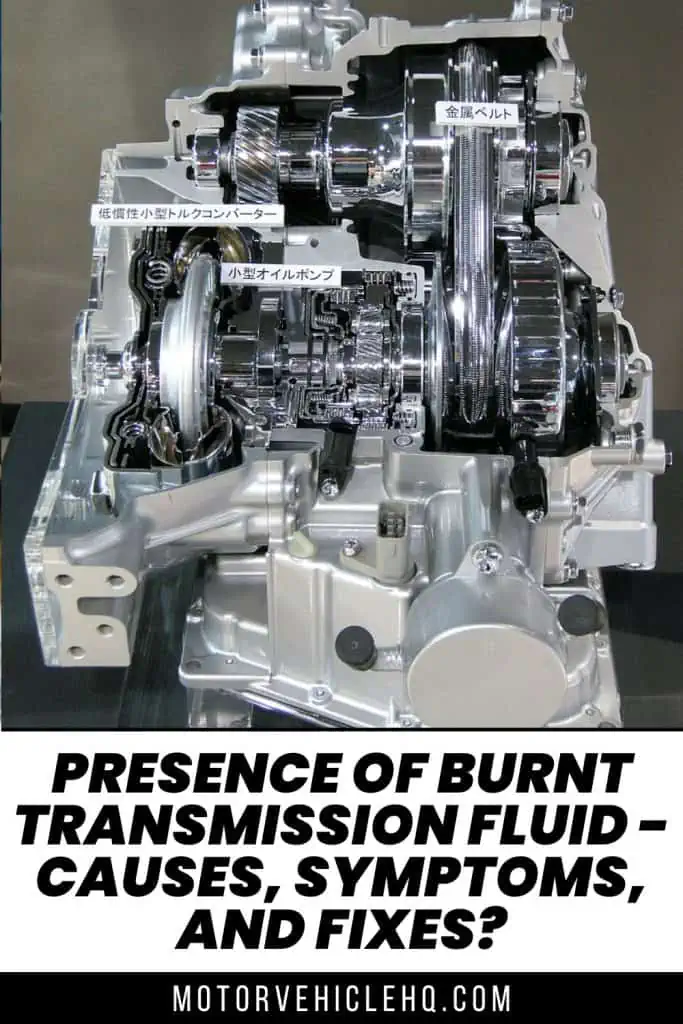
An open view of the internals of a CVT transmission by Hatsukari715

Jim Wicks is the founder of MotorVehicleHQ. With over two decades of experience in the automotive industry and a degree in Automotive Technology, Jim is a certified car expert who has worked in various roles ranging from a mechanic, car dealership manager, to a racing car driver. He has owned more than 20 cars over the past 15 years. Ask him about any vehicle you see on the road and he can tell you the make, model and year. He loves the aesthetics of all things cars, and keeps his vehicles in pristine condition.
In his free time, Jim enjoys getting his hands dirty under the hood of a classic car or taking long drives along the country roads. His favorite car? A 1967 Shelby GT500, a true classic that, according to Jim, “represents the pure essence of American muscle.”
